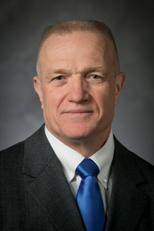Monday,
October 13, 2014 |
4:00-5:00pm |
BESC 180 |
The idea of holonomy
The notion of 'holonomy' in mechanical systems has been around for more than a century and gives insight into daily operations as mundane as steering and parallel parking and in understanding the behavior of balls (or more general objects) rolling on a surface with friction. A sample question is this: What is the best way to roll a ball over a flat surface, without twisting or slipping, so that it arrives at at given point with a given orientation?
In geometry and physics, holonomy has turned up in many surprising ways and continues to be explored as a fundamental invariant of geometric structures.
In this talk, I will illustrate the fundamental ideas in the theory of holonomy using familiar physical objects and explain how it is also related to group theory and symmetries of basic geometric objects.
Following Monday's lecture, there will be a reception in honor of Professor Bryant at the Koenig Alumni Center, 1202 University Avenue (the SE corner of Broadway and University). |
Tuesday,
October 14, 2014 |
5:00-6:00pm |
BESC 180 |
Convex billiards and non-holonomic systems
Given a closed, convex curve C in the plane, a billiard path on C is a polygon P inscribed in C such that, at each vertex v of P, the two edges of P incident with v make equal angles with the tangent line to C at v. (Intuitively, this is the path a billiard ball would follow on a frictionless pool table bounded by C.) For 'most' convex curves C, there are only a finite number of triangular billiard paths on C, a finite number of quadrilateral billiard paths, and so on.
Obviously, when C is a circle, there are infinitely many closed billiard n-gons inscribed in C, but, surprisingly, the same is true when C is an ellipse. (This is a famous theorem due to Chasles.)
The interesting question is whether there are other curves, besides ellipses, for which this is true. In this talk, I'll discuss these phenomena and show how they are related to the geometry of nonholonomic plane fields (which will be defined and described). |
